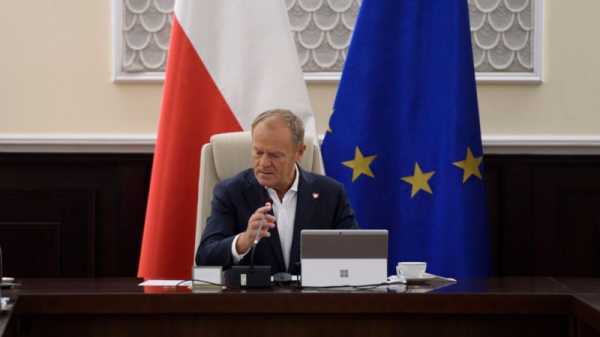
Tensions are rising among the majority parties in Italy’s ruling coalition after a proposal by Matteo Salvini’s Lega (ID) to extend the maximum number of terms of office for regional governors failed to convince the right-wing coalition’s other partners – a move that could reshape the power dynamics within the government and Lega ahead of June’s EU elections.
On Wednesday, the Italian Senate rejected two surprise amendments proposed by the Lega, with coalition allies, Prime Minister Giorgia Meloni’s Fratelli d’Italia (ECR) and Foreign Minister Antonio Tajani’s centre-right Forza Italia (EPP), as well as the main opposition parties, voting against.
Had Lega been successful in having the Senate pass the amendment, with support from the opposition Democratic Party (DP, S&D), these amendment proposals would have destabilised the majority and likely created a rift within the coalition.
Although this could change in the future, the proposed changes would largely help Lega – but also DP – as most of the regional governors currently in their second term are Lega members, while two are DP.
Veneto’s Lega governor, Luca Zaia, for example, is very popular, having been elected with a 76% majority in the last elections. Elections in Veneto are expected again next year.
However, according to Lorenzo Castellani, a political analyst at the LUISS Guido Carli University, Fratelli d’Italia and Forza Italia’s refusal to support Lega’s proposal should not be seen as threatening government stability but rather as a disagreement on institutional issues.
Still, Castellani told Euractiv Italy he predicts that such disagreements on institutional issues could intensify, suggesting that Lega could retaliate by not backing Meloni’s “mother of all reforms” that aims to implement the direct election of future prime ministers.
According to Castellani, it is likely that changes would more likely occur after the European elections, especially if these result in an altered power dynamic within the coalition or the different government partners, particularly Lega.
Lega is currently facing structural difficulties, according to pollster and political analyst Lorenzo Pregliasco, who pointed to the decline in Salvini’s numbers after his party peaked at 34% in the 2019 European elections, with the decrease in popularity contrasting with Meloni’s rise.
In addition, an expert on political trends and founder of the demographic research institute Quorum, Lorenzo Pregliasco told Euractiv Itay that the right-wing electorate often votes based on leadership, and Meloni’s leadership currently appears stronger than Salvini’s.
Pregliasco also predicts that June’s EU elections will have Lega and Forza Italia compete for second place within the coalition led by Meloni’s Fratelli d’Italia – marking some kind of ‘role reversal’ between the parties of Meloni and Salvini as Fratelli D’Italia scored 6% in 2019’s EU elections.
If Salvini’s Lega were to perform worse than Forza Italia in the EU elections, Castellani suggests that this could destabilise Salvini’s hitherto unchallenged leadership and even have dire consequences for the far-right ID party, of which the Lega is a member.
(Alessia Peretti, Simone Cantarini | Euractiv.it)
Read more with Euractiv

Danish government’s plan to extend military service ‘unrealistic’, says unionThe government’s recent proposal to extend compulsory military service from four to 11 months is “unrealistic,” mainly due to a lack of capacity, a leading union representing Danish armed forces personnel told Danish media on Thursday.
Subscribe to our EU 2024 Elections newsletter
Email Address * Politics Newsletters
Source: euractiv.com



